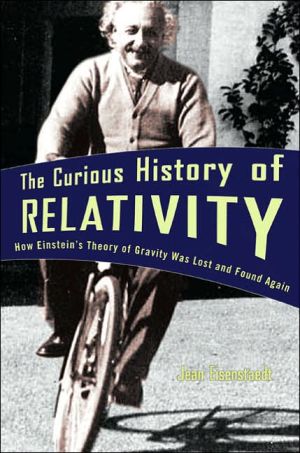

 |

|

The average rating for The Curious History of Relativity: How Einstein's Theory of Gravity Was Lost and Found Again based on 2 reviews is 4 stars.
Review # 1 was written on 2014-03-12 00:00:00 Michele Hanna Michele HannaThis is a clear and complex history of the physics of relativity that deserves to better known. While other works focus on more recent cosmological theories or perhaps touch on some of the early demonstrations of general relativity like the 1919 solar eclipse expeditions or the perihelion of Mercury, Eisenstaedt's book really delves into the details of Einstein's impact on the evolution of 20th-century physics. Don't expect a quick and breezy tour like "A Universe from Nothing" or similar works - this book is not for the scientifically faint of heart. Even when the technical bits and diagrams sometimes get a bit dense, however, Eisenstaedt does a good job of conveying clearly why particular aspects of relativity were important or troubling for modern physics, as well as why Einstein's theory of gravity was seen as something of an experimental backwater for much of its first half-century of life. This last aspect of the book is particularly valuable, as the "lost and found" aspect of Eisenstaedt's title describes why most physicists continued to gravitate (so to speak!) toward quantum mechanics rather than relativity for many decades after 1915. Compared with the mid-20th century race to build more and better particle accelerators for testing different aspects of quantum mechanical theory, relativity seemed more like a theory that was nearly impossible to conduct experimental work on and whose results offered only relatively small improvements over classical physics. It was not really until later in the century, when theoretical and observational astronomy began to offer up more exotic objects like black holes and neutron stars as testing grounds, that relativity finally came into its own as a theory that is essential to our modern understanding of the structure and behavior of the universe. |
Review # 2 was written on 2011-10-15 00:00:00 Reed Shusterman Reed ShustermanFor those familiar with Fred Hoyle and his intriguing work, this very detailed and readable book will make a fine addition to the bookcase. It does however, require firm attention to understand fully some of the descriptive passages, but rewards clear concentration. Although cosmology and recent astronomical research have moved on and beyond the scope of Hoyle`s work, this nevertheless provides keen insight into an important part of the journey. |
CAN'T FIND WHAT YOU'RE LOOKING FOR? CLICK HERE!!!